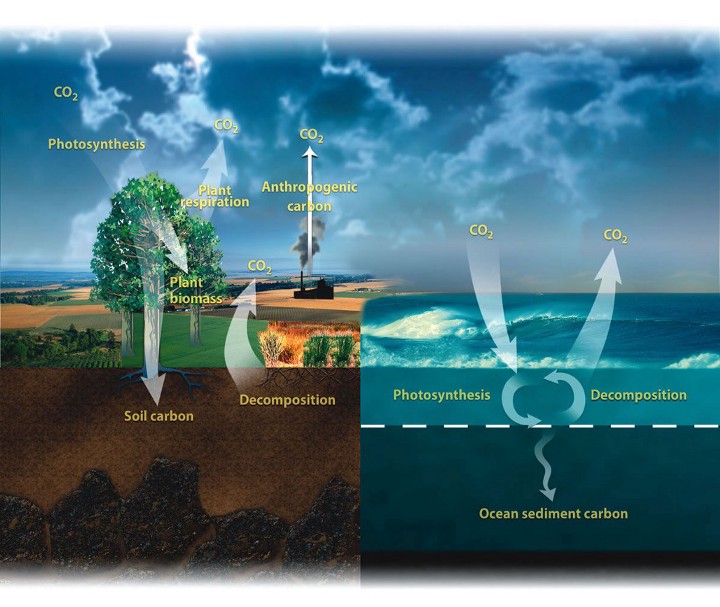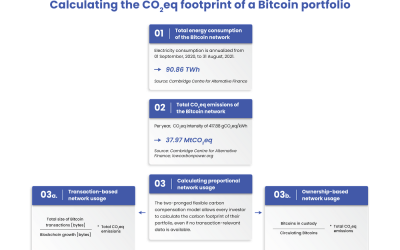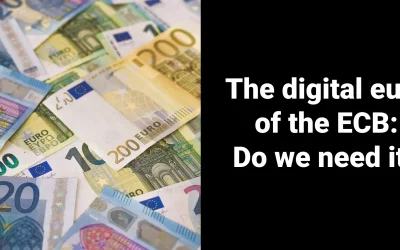The energy transition is the transformation process of the energy sector towards net-zero carbon emissions by substituting fossil fuels with renewable alternatives. At its center, there is the pursuit to limit anthropogenic climate change in order to minimize the ever more noticeable effects and risks of an increase in the earth’s temperature. The energy transition is a complex and capital intense challenge that requires nothing else than a paradigm shift. While lots of external factors, such as regulatory certainty and public investment must be set, and it is dependent on macroeconomic, microeconomic, and geopolitical factors, efficient private capital allocation at speed and scale will be critical as the next decade is decisive for the net-zero energy transition. Creating the right investment framework and thus targeted investment opportunities aligning with the overall goal of the energy transition will not only help access public funds, but enable also to tap into the trillions held by private actors. Transparent markets for ‘green quality assets’ facilitated through the tools of web3 based on crypto assets and smart contract platforms, could support the mobilization of the needed funds, enabled through optimized capital allocation in a cost-efficient and scalable manner, leading to the creation of new markets competing with current options. Markets for all kinds of assets might mobilize the vast amount of funds needed, and first movers will benefit by being part of the standardization process from the beginning. — Authors: Denise Duve, Prof. Dr. Philipp Sandner

The current status of our global energy system and its climate impact
Climate change is one the most pressing issues of our times
Climate change is one of the most pressing issues of our times. Global warming has come to dominate the discussions in industrialized nations, and renewable energies and CO2 avoidance has come to the fore, as each report published by the Intergovernmental Panel on Climate Change (IPCC) demonstrates increasing urgency to act: ocean acidification, sea-level rise, and ecosystem extinction are at record levels. According to the International Energy Agency (IEA), carbon dioxide emissions have risen to their highest level ever, and according to NASA, 2022 is going to be the year with the hottest average temperature in the last 2000 years. The current trajectory is making the aim of the 2015 Paris Agreement to limit global warming to 1.5°C to avoid the worst impacts of climate change an increasingly ambitious target.
The carbon cycle, part of a complex system
Most carbon is stored in rocks such as limestone, with much of the rest being found in the ocean’s sediment, soil carbon, fossil carbon, plant biomass and atmosphere. As with everything else in nature, the carbon flow is a cycle: Carbon, mainly in the form of carbon dioxide and methane, cycles through the earth, the ocean, living organisms (plants, animals, micro-organisms), the atmosphere, through the land, the earth’s interior, and the ocean.
Man-made climate change and its impact results from the interruption of the natural carbon cycle. Specifically, carbon is released back into the cycle quicker than it can be absorbed by the natural system, mainly due to the combustion of fossil fuels.
This is happening as — despite urgent efforts — our modern lives are still mainly powered by fossil fuels that constitute around 84.3% (2019) of global primary energy consumption. This includes the industrial production of goods such as cement and steel, transportation, energy use in buildings, as feedstock for petrochemical products, etc. Other energy sources like renewables (such as wind and solar) and other non-fossil fuels (such as nuclear) represent 5.0% and 10.7% of global energy respectively.
At this stage it is clear to see that fueling our economy by burning huge amounts of fossil fuel is pushing the natural carbon cycle out of balance, as nearly ¾ of greenhouse gas (GHG) emissions result from energy use, amplifying the greenhouse gas effect and resulting in a significant increase of global average temperatures.
The energy transition
The energy transition refers to a shift in the energy sector towards net-zero carbon. To achieve this, the energy system will need to move away from fossil fuels toward renewables. The predictions of the potential of renewables as a primary energy source vary between 70% International Energy Agency (IEA) and 75% International Renewable Energy Agency (IRENA) by 2050. A push of clean technology is needed, i.e. energy efficiency, circular economy approaches, green transportation, alternative energy carriers like green hydrogen, etc. Such a massive transformation in the global energy system implies major shifts, also in geopolitical power structures, as an energy system powered by renewables will differ profoundly from the current one.
The energy trilemma
The war in the Ukraine made the vulnerability of the energy system and the challenge of balancing energy security, affordability, and environmental sustainability, also known as the energy trilemma, painfully apparent. Sustainability has the following facets:
A) Security: The ability to meet future demand and the resilience of the energy system to bounce back from interruptions
B) Affordability: The ability to keep energy universal affordable
C) Sustainability: The transition towards a ‘clean’ energy system

With Russia covering a high percentage of the global energy supply, energy security and affordability are greatly challenged, especially in Europe. For example, Germany is already preparing to ration gas during the coming winter. Furthermore, investments in big oil firms and an increase of coal-based power plants have been increased, challenging the sustainability component.While national energy strategies were greatly disrupted by the war in the Ukraine, there is a clear hope that the situation has created a sense of urgency to improve energy security through cleaner alternatives. That means, diversifying in terms of energy source and type, and a decoupling from Russia. The EU, for example, with its REPowerEU plan, has the target to accelerate the green transition to reduce Russian dependencies through, e.g., increasing hydrogen targets for industry and transport, as well as through increased investments.
The energy transition is complex and balancing the energy triangle will stay a challenging task, and energy strategies can be expected to continue being interrupted by unexpected events. Hence, the resilience for energy security and accessibility is critical for economic development and will be at the core of future strategies.
The financing question — mobilizing investments
One of the main questions in the energy transition remains who is financing this shift. Dynamically driving innovation requires the mobilization of a lot of capital. Not to forget that the rise of the fossil fuel industry was and still is highly subsidized by government spending. Governments still put several 100 billion USD into fossil fuels each year, whereas only a fraction of that is spent on renewables.
According to McKinsey, “USD 9.2 billion capital spending on physical assets for energy and land-use systems will need to rise by USD 3.5 trillion per year for the next 30 years and USD 1 trillion will need to be reallocated from high to low emissions assets.” (McKinsey, 2022)
To achieve the necessary mobilization of capital for the energy transition to occur it is necessary to focus not only on public funds, but to also tap into the trillions held by private actors. Thus, financial vehicles need to be created. Securitization that 1) split the high initial investment risks of those technologies’ developments while keeping capital sufficiently concentrated to push innovation, 2) sends demand-side signals, 3) supports additional finance streams at various risk levels, and 4) creates vehicles make real ESG efforts investable and create vehicles to re-pay for the green premium, may prove necessary.
Such financial instruments are not just crucial to further advance the energy transition in developed countries, but also to facilitate global development and push the transition in developing countries where financial markets are not as mature and the cost of capital remains high.
The necessary paradigm shift for a net zero energy system
From a shareholder to a stakeholder approach — incentive structures for systems
All systems work through incentives, hence setting the right incentives is key for enabling a dynamic energy transition. The current system is based on the shareholder theory, grounded on the principle of comparative advantage. However, the laws of thermodynamics and its finiteness are not respected in this system ruled by the ‘invisible hand’, which according to Adam Smith leads to the optimal resource and social welfare allocation due to the self-interest of each individual (Smith, 1937). Hence in the current market system ‘true costs’ are not realized when companies strive for profit maximization, as common goods are still insufficiently taken into account. The environment and the climate are common goods, affected by e.g. CO2 emissions. These so-called externalities result in sustainability challenges, and the consequences of these market failures become more and more apparent with climate change being the biggest threat of our times. Therefore there is an increased public demand for a future system that enables the integration of more participants and creates incentives to act sustainably — a stakeholder economy.
The era of greenwashing
The energy transformation has been going on for decades shifting from oil to gas, as a cleaner alternative. However, what differs in the current development, is that there is a market demand, an increasing regulatory requirements, and pressure from investors to understand the social and environmental impacts at each level. This points towards the following: Making each industry increasingly responsible for its impacts along the whole value chain. Contrary to the last decade where CSR reporting was mainly focused on impact at a level directly controlled by corporations, hence on-site and from energy procurement (scope 1 and 2), there now is an increasing demand to transparently consider the whole value chain (scope 3) which constitutes up to 90% of the overall impact, depending on the industry. There is currently an effort to create standardized units for CSR impact beyond accounting for CO2 equivalents, encompassing other factors such as human rights, etc.
The energy transition and it’s shift in ecological and human impacts
Transitioning to a clean energy system will completely change the global energy landscape. Wind farms, solar photovoltaic, electric vehicles infrastructure, electrolyzers, etc. will keep drastically increasing the demand for minerals, move global powers and bring windfalls to certain countries that have a rich number of metals necessary for the aformentioned technologies, such as copper, lithium, nickel, etc. or availability of ample sun,wind, and land. Note that there is probably a concentration of over 75% of all minerals in just 10 countries. Hence the transition will shift the impacts and geological dependencies, along the value chain. Ecological (i.e., CO2 equivalent, impacts from mining, etc.) and social impacts (i.e., human health, worker conditions, etc.) will lead to a demand for transparency along the whole life cycle. It will be this specific kind of transparency that will make it possible to place investment decisions with an overall positive CSR impact.
The energy transition is a dynamic process that needs room to develop
The energy transition is currently still at the very beginning. In order to succeed, it requires a high level of innovation and collaboration amongst value chain partners. New participants along the value chain are going to enter the market, with new technologies and approaches, improving and extending current possibilities. The market will be constantly evolving as new scientific findings appear influencing and improving market conditions. Therefore, it is crucial to establish the right infrastructure that supports such dynamic developments. This requires: Allowing for innovation to be employed efficiently to further new developments on a common front. Many types of collaboration can be possible: for example, on an industry level that pushes clean tech in the manufacturing process, circular economy approaches, collaborations between customers and suppliers. Concerning the latter, this can be illustrated by the steel industry where car manufacturers together with steel manufacturers are jointly decarbonizing their products and communicating a carbon-free product value chain. Such collaborations and partnerships require that data, whether it is carbon emission or other relevant data, is exchanged between partners in a trusted way. Such data exchange requires data sovereignty and integration of partners on a horizontal and vertical level for the system to grow and adapt dynamically and efficiently.
The positive aspects a crypto-assets-based infrastructure could bring
Crunching the numbers — transparent markets, asset quality, incentive structures and new technological means
In its 6th Assessment Report, the IPCC calculated a remaining carbon budget of around 400 Gt of CO2 that would still allow our world to comply with the 1.5 °C target. The current emission level is around 56 Gt CO2 per year and the average polluting country will run out of “emission budget” in around 8 to 9 years. This shows that a lot of capital will be necessary: Efficient capital allocation into green tech, ecosystem restoration and minimizing waste through circular economy approaches. These approaches, to just name a few, will be decisive for minimizing adverse climate change effects.
Markets that provide full transparency in terms of impact and accurate measurement along the value chain, that are scalable to many market participants, could use the proven mechanisms of our economic system and help drive the system towards a net-zero economy. But, externalities and stakeholders need to be adequately represented and accounted for.
Smart contract platforms as trusted record-keeping tool for ESG criteria
Smart contract platforms such as Ethereum, in combination with other technologies like IoT, AI, and machine learning, establish a great basis for data recording in a trusted and transparent way. Through smart contracts, real-time data can be gathered along the entire value chain and automated, through programming business logic and regulatory insights into the ledger, pre-and post-trade. Standardized processes and integration with measurement systems streamline and optimize this, allowing for a high automation rate reducing time and resources needed.
Algorithms allow input data to be checked and verified instantaneously with the blockchain record serving as the ultimate truth in the long term. With this, verification and validation processes can be integrated using signing agreements, as well as proven and established methods from the ‘off-chain’ world to ensure data integrity. Once the right mechanisms for record-keeping are established, data can be stored and handled with minimal risk of error and across many individual parties, with reduced risk of manipulation. This could facilitate the transition from trust in traditional paper-based processes towards having real traceable data, along the entire value chain.
Tokenization and smart contracts as an efficient tool to incentivize and allocate capital for ESG efforts along the value chain
The standardization and rules for accounting units’ alignment process is an ongoing and highly complex topic. This also includes the effort to integrate those into a system with the right incentive structures. The result is a structure that allocates capital for ‘true ESG’ efforts. The basis for such a system is data integrity and mutual benefit along the entire value chain. As discussed above, this has been highly challenging in the past decades. A DLT-based infrastructure can improve the situation, as data can be efficiently gathered in real-time pre- and post-trade, and mechanisms for verification can be integrated therein. In turn, this creates a highly trusted, and immutable audit trail. Token contracts provide a tool to create assets from data gathered along the entire value chain so that each participant in the system can monetize their actual ESG contribution without the need for intermediaries.
Future proof infrastructure for an evolving system
Smart contract platforms such as Ethereum have the unique capability to cater to the above-described requirements in terms of flexibility within a dynamic system, promoting innovation by enabling collaboration. Such infrastructure provides the possibility of integrating participants in an evolving market efficiently into the system on a trusted partner level. This allows data sovereignty and adaptation to locally differing and evolving requirements and standards. Through standardization and publicly accessible code, a high level of efficiency can be achieved.
Tokenization, an efficient tool to create financial instruments
As described above, data gathered along the value chain is documented in an immutable and trustworthy way on a distributed ledger. This highly trusted data can in turn be securitized in a standardized and highly efficient manner. It also allows programming business logic and applying regulatory insights in tandem with governance rules directly on the ledger, by use of smart contracts. This can support many of the needed mechanics, making this entire transition process scalable and improving what in today’s infrastructure is a time-consuming and cost-intensive process.
First benefit of tokenization: Split the high initial investment risks of those technologies’ developments, while keeping capital sufficiently concentrated to push innovation, and send demand side signals
Tokenization makes fractionalization of investments possible which may prove useful in the energy transition in many ways.
One example of this would be a solar farm in the initial building phase. Investment and returns of those projects can be efficiently managed through smart contract platforms and their end-to-end integration — automated in combination with AIoT along the chain of custody. Once the project enters the production phase, returns can be allocated according to initial agreements. This would also have a positive effect on capital aggregation and avoidance of too fragmented developments.
Efficient and automated processes pre- and post-trade generate massive gains in efficiencies and allow many investors to be included in a market that is otherwise accessible to institutional investors only due to its cost intensity. Hence, making more capital available while allowing retail investors a greater level of control over their portfolios.
While supporting the initial project development phase, financial instruments may be created at various stages of the project. At a later stage, once the technology is ready and the project is operational, a fractionalized investment could be used as a refinancing tool for developers leading to capital being available for new projects while facilitating the same mechanics along the way.
Second benefit of tokenization: Support additional finance streams at various risk levels
Conclusion
New possibilities around trust and transparency made possible through digitization and tokenization allows for new forms of decentralized documentation and securitization. This enables the realization of technological potential to transact and own assets in an unprecedentedly scalable manner, as many participants can be cost-efficiently integrated into the system.
This can open new worlds in terms of efficient capital allocation through transparent markets, enabled through: (1) an accurate and transparent lifecycle “track & trace”, (2) economic incentives to act sustainably for the many, and (3) a dynamic system that pushes innovation while allowing for collaboration in a trusted way within a growing system. This way, markets for all kinds of assets will be able to mobilize the vast amount of funds necessary for the energy transition at scale and speed.
Remarks
Denise Duve is a blockchain enthusiast as well as a trained business administrator and environmental manager. She held several positions in international communication consulting, was a research fellow at the Frankfurt School Blockchain Center and integrated her different interests and educational background as Strategic Advisor ESG at Blocksize Capital.
Prof. Dr. Philipp Sandner has founded the Frankfurt School Blockchain Center (FSBC). From 2018 to 2021, he was ranked among the “top 30” economists by the Frankfurter Allgemeine Zeitung (FAZ), a major newspaper in Germany. Further, he belonged to the “Top 40 under 40” — a ranking by the German business magazine Capital. He has been a member of the FinTech Council and the Digital Finance Forum of the Federal Ministry of Finance in Germany. He is also on the Board of Directors of FiveT Fintech Fund and Blockchain Founders Group — companies active in the field of blockchain startups.
Literature
Adam Smith (1937), The wealth of nations, The modern library, 1037
The Economist (2022), The transition to clean energy will mint new commodity superpowers. Available: https://www.economist.com/finance-and-economics/2022/03/26/the-transition-to-clean-energy-will-mint-new-commodity-superpowers [Accessed 14.06.2022]
The Economist (2022), The world’s energy system must be transformed. Available: https://www.economist.com/schools-brief/2020/05/23/the-worlds-energy-system-must-be-transformed-completely [Accessed 14.06.2022]
Energy Transition, The Global Energiewende (2022), Since Ukraine Invasion, Energy Security and Climate Policy are One, https://energytransition.org/2022/05/since-ukraine-invasion-energy-security-and-climate-policy-are-one/ [Accessed 14.06.2022]
IPCC (2022, IIntergovernmental Panel on Climate Change, 6th Assessment Report the IPCC, Available: https://www.ipcc.ch/assessment-report/ar6/ [Accessed 13.06.2022]
McKinsey (2022), What it would cots, what it would bring, Available: https://www.mckinsey.com/business-functions/sustainability/our-insights/the-net-zero-transition-what-it-would-cost-what-it-could-bring [Accessed 13.06.2022]
NASA (2022), National Aeronautics and Space Administration (NASA) Facts, Global temperature, Available: https://climate.nasa.gov/vital-signs/global-temperature/ [Accessed 13.06.2022]
Our World Data (2022), Future greenhouse gas emissions, Available: https://ourworldindata.org/future-emissions [Accessed 13.06.2022]
Our World Data (2022, Emissions by sector, Available: https://ourworldindata.org/emissions-by-sector [Accessed 13.06.2022]
WEF (2022), World Economic Forum (WEF), Helping critical industry and transport reach net-zero carbon emissions by 2050 https://www.weforum.org/agenda/2022/06/working-together-to-reach-net-zero-manufacturing/ [Accessed 16.06.2022]
World Energy Council (2021), The world energy trilemma index, Available: https://www.worldenergy.org/assets/downloads/WE_Trilemma_Index_2021.pdf [Accessed 13.06.2022]




